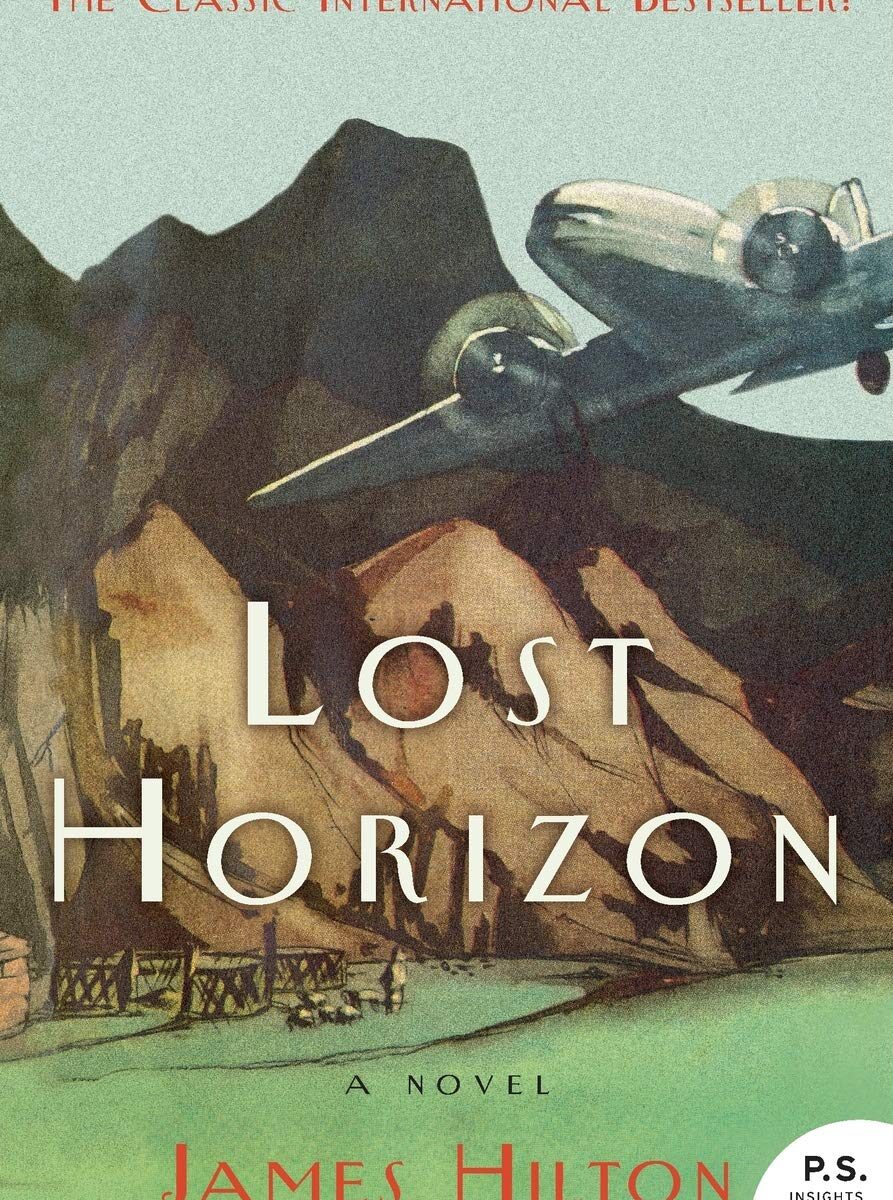James Hilton, Lost Horizon (1933)
You may never have heard of Lost Horizon or James Hilton (who also wrote Goodbye, Mr. Chips), but you have heard of the magical place he invented: Shangri-La.
Lost Horizon is the story of a group of Westerners who, fleeing a revolution in Afghanistan, are crash-landed in the Himalayas and find their way to a mysterious monastery called Shangri-La. It turns out that this monastery is run not by an Asian, but by a Catholic monk from Luxembourg who has discovered the secret, if not to immortality, then to immense longevity. The head lama, seeing that he will die soon, recruits one of the Westerners to take over, presenting Shangri-La as a kind of repository of human culture and decency, hidden in the mountains, that may be able to weather the storm and share its wisdom after the coming dark age. The Westerners face a choice between a peaceful, contemplative life lasting centuries, but separated from the outside world, or an attempt at escape.
The novel really took off after the Frank Capra movie in 1937 and its publication as the first Pocket Book paperback in 1939. During the years of World War II, the idea of Shangri-La seems to have taken on a powerful resonance. When President Roosevelt converted a Maryland government camp called Hi-Catoctin into a presidential retreat in 1942, he named it Shangri-La — later renamed Camp David by President Eisenhower.
As a novel, Lost Horizon is an amusement cleverly laced with high culture references designed to make the reader feel smart while not demanding any actual knowledge, a trick Umberto Eco would later put to use to great effect. Artistically Lost Horizon is unimportant, and it has very little to do with anything actually Himalayan. The monastery a pastiche of Chinoiserie, complete with a beautiful Chinese girl who plays Rameau beautifully on the harpsichord, of all things.
For our purposes, though — understanding the train of Western fascination with South Asia that put one young traveler there in 1997 — Lost Horizon is a key of the puzzle. As a mass popularization of Theosophist-inspired ideas about a mystical Tibet populated with hidden Masters, Lost Horizon’s impact is enormous. The name Shangri-La began to attach to all sorts of things, not least rock and roll: the girl group supposedly got it from a Queens restaurant, and it turns up on an album by The Kinks in 1969 and by The Electric Light Orchestra in 1976. In fact, Shangri-La seems to have floated free of any real connection with the Himalayas at all, yet it seems undeniable that it contributed to a growing fascination with that part of the world at a time when Nepal was first opening to tourism and as a generation of young people set out on what would become known as the Hippie Trail (or the Hashish Trail) to Kathmandu.

